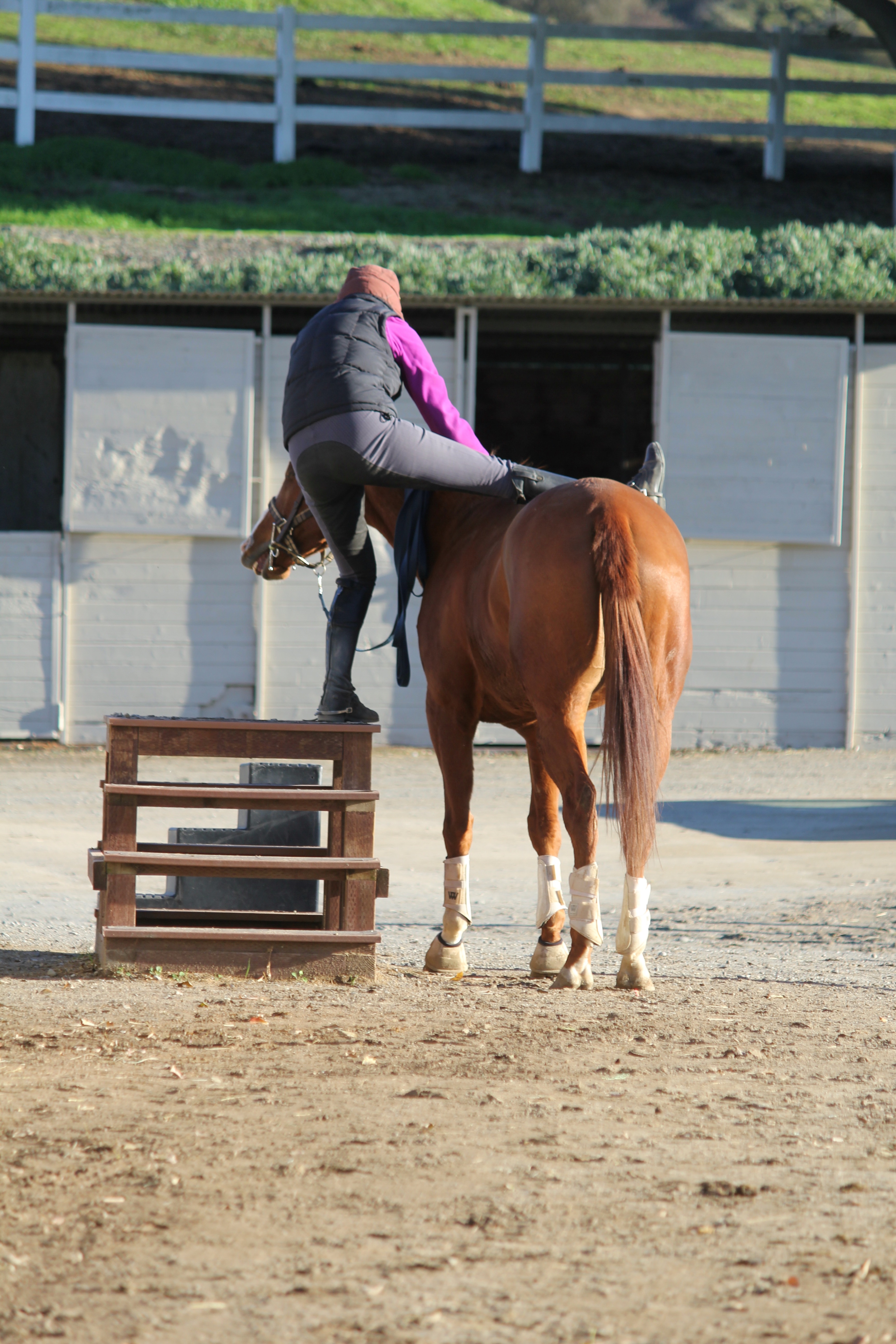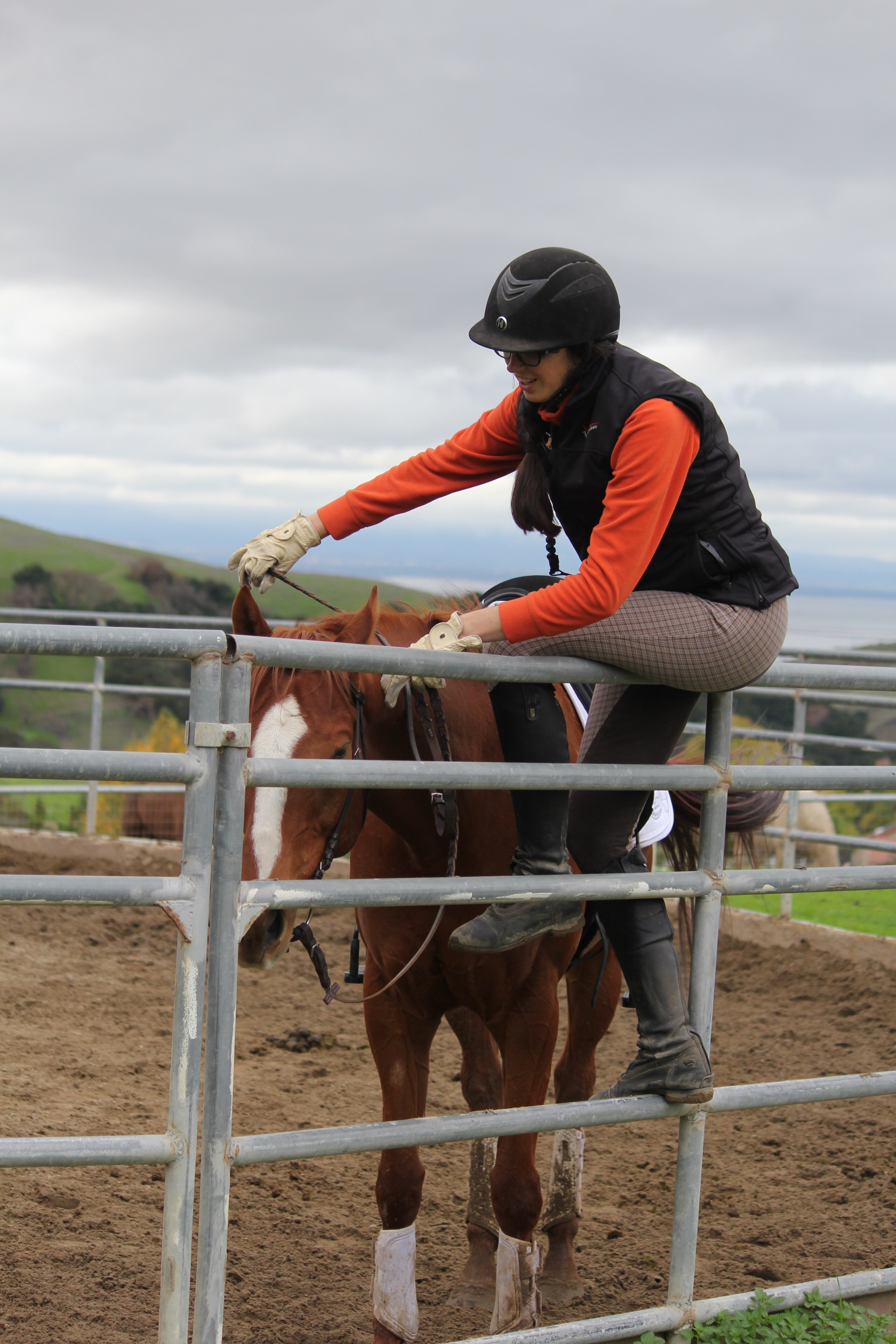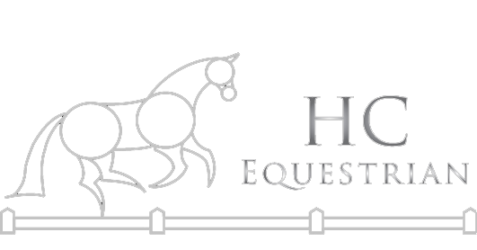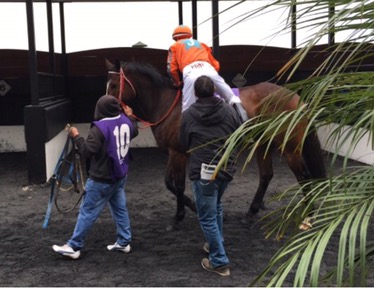Blue and Corny are ex racehorses that I’m retraining to be sport and pleasure horses. One big difference between racing and recreational riding is the method of mounting.
It takes two extra people to get a jockey on a racehorse. One to hold the horse’s head, the other to give the jockey a leg up. This always happens from the horses left side. Oh, and that racehorse is probably moving when he’s getting mounted.
I don’t want to be so dependant on other people just to get on the horse. I want to be able to mount from a mounting block onto a horse that remains stationary until cued to move.
I read a study once that of the equestrian head injuries seen in emergency rooms, the greatest percentage came from mounting/dismounting. I’m not going to cite a source here, and I can’t find proof of this on the internet. Actually I might have heard this from eventing trainer Matt Brown at a dinner table once. His wife was doing a study on equestrian head injuries and those were some of her results. That was over ten years ago though, so who knows, I’m not a credible source.
Anyway, the horses I train are expected to stand well for mounting by an amateur,a professional, or a spastic professional. I sometimes fall into the latter category.
Thanks to proper mounting training, and the good nature of horses, I didn’t die in the following scenarios
- Mounting 5 year old while wearing new breaches, crotch of my pants dropped while swinging a leg over and I didn’t clear the cantle of the saddle. My pants twanged me off the cantle and I landed on my horses butt behind the saddle. This was at a horse show. Held at the stable that had recently hired me.
- First ride after knee surgery, 4 year old horse swishes his tail while I am swinging my leg over, and a long strand of tail hair gets stuck on my spur. His tail was now being pulled left, over his back and onto his right side. I untangled it and made some kind of vow about fly spray and tail detangler.
- Thought it would be a good idea to use a stack of pallets as a mounting block. When I pushed off of them, they started to fall into the horse’s legs, which spooked her a little, and I landed behind the saddle. Luckily when she was moving, she was pivoting around her hind legs, which made it fairly easy to stay on until I had a good place to hop off.
- Got an exuberant leg up that tossed me all the way over the horse and left me doing my itsy bitsy spider impression up the off side of the horse to get back in the saddle. Come to think of it, this one has happened twice.
How am I still alive?!?! Mostly of the food nature of horses, I won’t lie. But I do what I can to help out the spaz down the road that might have a mounting fail. I like to accustom my horses to getting poked in their croup with a toe while being mounted. Or having a leg dragged over their haunches. Or excessively weighting their withers or neck. I like to do this from the left and right sides. I also put pressure on their barrel where my leg will end up. I rode an ottb once who had never been ridden by a tall person. Even though he was already trained to third level dressage, he freaked out a little bit when he felt my leg down low on his barrel for the first time.
 Corny getting used to legs dragging over him
Corny getting used to legs dragging over him
 Blue learning to sidle up to the rail
Blue learning to sidle up to the rail
So here I am, sitting, standing, stretching, flopping, and generally spazzing as I accustom the brothers to standing relaxed and immobile during mounting. I also want them to be leaning a little towards me as I mount, instead of leaning away and ready to step off.
Corny took to it all quite easily. I ended up getting on him a week before his brother. Blue objected more to my spazziness. He’s got a bossy personality and he’s convinced that I’m doing it wrong and that he shouldn’t have to tolerate that. He’s coming around though. He’s very good from the left now, and while I can dismount from the right, he won’t line up for mounting on the right yet.


